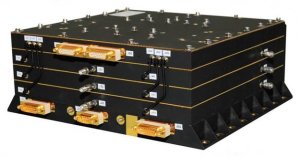The 22 satellites so far contracted to join the four already in orbit are having their payloads manufactured at Surrey Satellite Technology Ltd in the UK, which are then integrated to their satellite platforms at OHB in Germany. Finally, each complete satellite is tested at ESTEC in the Netherlands for launch from Europe’s Spaceport in French Guiana.
This main manufacturing process is fed by smaller but no less crucial production lines all across Europe, run by specialised companies supplying essential building blocks to Galileo’s prime contractors.
A norwegian conpany, Kongsberg Norspace, located to the south of Oslo, is the supplier of two key elements within the satellites: the Frequency Generator and Upconverter Units (FGUUs) and Search and Rescue Transponders (SARTs).
The redundant shoebox-sized FGUU takes the outputs of the satellite’s adjacent Navigation Signal Generator Unit and converts them into L-band signals across Galileo’s three spectral bands. It is these signals that end up guiding Galileo users through their receivers.
The FGUU relies on Galileo’s atomic clocks to keep accurately locked on its set frequency. It also actively determines which of the clocks and other redundant subsystems it should employ at any one time for optimal operations.
Kongsberg Norspace also contributes to the non-redundant SART, which picks up emergency distress calls from the ground or sea and relays them to the nearest rescue centre, while also sending a return-link message that help is on the way. Galileo’s search and rescue capability marks a significant enlargement of the international Cospas-Sarsat system.


